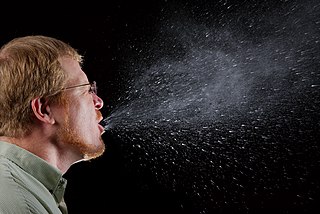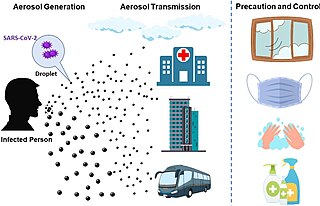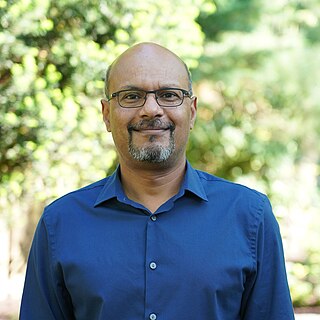The Engineering and Physical Sciences Research Council (EPSRC) is a British Research Council that provides government funding for grants to undertake research and postgraduate degrees in engineering and the physical sciences, mainly to universities in the United Kingdom. EPSRC research areas include mathematics, physics, chemistry, artificial intelligence and computer science, but exclude particle physics, nuclear physics, space science and astronomy. Since 2018 it has been part of UK Research and Innovation, which is funded through the Department for Business, Energy and Industrial Strategy.

The University of Cambridge Department of Engineering is the largest department at the University of Cambridge and one of the leading centres of engineering in the world. The department's aim is to address the world's most pressing challenges with science and technology. To achieve this aim, the department collaborates with other disciplines, institutions, companies and entrepreneurs and adopts an integrated approach to research and teaching.

The Department of Engineering Science is the engineering department of the University of Oxford. It is part of the university's Mathematical, Physical and Life Sciences Division. The department was ranked 3rd best institute in the UK for engineering in the 2021 Research Excellence Framework.

Airborne transmission or aerosol transmission is transmission of an infectious disease through small particles suspended in the air. Infectious diseases capable of airborne transmission include many of considerable importance both in human and veterinary medicine. The relevant infectious agent may be viruses, bacteria, or fungi, and they may be spread through breathing, talking, coughing, sneezing, raising of dust, spraying of liquids, flushing toilets, or any activities which generate aerosol particles or droplets. This is the transmission of diseases via transmission of an infectious agent, and does not include diseases caused by air pollution.

Dimitris Drikakis, PhD, FRAeS, CEng, is a Greek-British applied scientist, engineer and university professor. His research is multidisciplinary. It covers fluid dynamics, computational fluid dynamics, acoustics, heat transfer, computational science from molecular to macro scale, materials, machine learning, and emerging technologies. He has applied his research to diverse fields such as Aerospace & Defence, Biomedical, and Energy and Environment Sectors. He received The William Penney Fellowship Award by the Atomic Weapons Establishment to recognise his contributions to compressible fluid dynamics. He was also the winner of NEF's Innovator of the Year Award by the UK's Institute of Innovation and Knowledge Exchange for a new generation carbon capture nanotechnology that uses carbon nanotubes for filtering out carbon dioxide and other gases.

A respiratory droplet is a small aqueous droplet produced by exhalation, consisting of saliva or mucus and other matter derived from respiratory tract surfaces. Respiratory droplets are produced naturally as a result of breathing, speaking, sneezing, coughing, or vomiting, so they are always present in our breath, but speaking and coughing increase their number.

The Henry Royce Institute is the UK’s national institute for advanced materials research and innovation. Its vision is to identify challenges and to stimulate innovation in advanced materials research to support sustainable growth and development. Royce aims to be a "single front door" to the UK’s materials research community. Its stated mission is to “support world-recognised excellence in UK materials research, accelerating commercial exploitation of innovations, and delivering positive economic and societal impact for the UK.”

Anne Neville was the Royal Academy of Engineering Chair in emerging technologies and Professor of Tribology and Surface Engineering at the University of Leeds.
Eleanor Phoebe Jane Stride is a Professor of Biomaterials at St Catherine's College, Oxford. Stride engineers drug delivery systems using carefully designed microbubbles and studies how they can be used in diagnostics.
Rebecca Jane Lunn is a Professor and Head of the Centre for Ground Engineering and Energy Geosciences at the University of Strathclyde. I
Allan Matthews (1952) is Professor of Surface Engineering and Tribology at The University of Manchester and Director of the Digitalised Surfaces Manufacturing Network.

Shini Somara is a British mechanical engineer, media broadcaster, producer and author. She has presented TechKnow on Al Jazeera America and reporting for various BBC shows including The Health Show. She has also hosted two educational series of physics and engineering videos on the Crash Course YouTube channel for PBS Digital Studios. She has been a presenter on BBC America, Sky Atlantic, BBC1, BBC2, and PBS.
Rebecca Julia Shipley is a British mathematician and professor of healthcare engineering at University College London (UCL). She is director of the UCL Institute of Healthcare Engineering, co-director of the UCL Centre for Nerve Engineering and Vice Dean (Health) for the UCL Faculty of Engineering Sciences. She is also co-director of the UCL CHIMERA Research Hub with Prof Christina Pagel and a Fellow of the Institution of Engineering and Technology.
Lydia Bourouiba is an Esther and Harold E. Edgerton Professor, an Associate Professor in the Civil and Environmental Engineering and Mechanical Engineering departments, and in the Institute for Medical Engineering and Science at the Massachusetts Institute of Technology. She is also a Harvard-MIT Health Sciences and Technology Faculty, and Affiliate Faculty of Harvard Medical School. She directs the Fluid Dynamics of Disease Transmission Laboratory at MIT.

The transmission of COVID-19 is the passing of coronavirus disease 2019 from person to person. COVID-19 is mainly transmitted when people breathe in air contaminated by droplets/aerosols and small airborne particles containing the virus. Infected people exhale those particles as they breathe, talk, cough, sneeze, or sing. Transmission is more likely the more physically close people are. However, infection can occur over longer distances, particularly indoors.

Rajat Mittal is a computational fluid dynamicist and a professor of mechanical engineering in the Whiting School of Engineering at Johns Hopkins University. He holds a secondary appointment in the Johns Hopkins University School of Medicine. He is known for his work on immersed boundary methods (IBMs) and applications of these methods to the study of fluid flow problems.
Stephen John Haake is a British sports engineer. He is professor of sports engineering at Sheffield Hallam University, England and is founding director of the university's advanced wellbeing research centre.
Xiaoyu Luo is a Chinese and British applied mathematician who studies biomechanics, fluid dynamics, and the interactions of fluid flows with soft biological tissues. She is a professor of applied mathematics at the University of Glasgow.
The UK Infrastructure Transitions Research Consortium (ITRC) was established in January 2011. The ITRC provides data and modelling to help governments, policymakers and other stakeholders in infrastructure make more sustainable and resilient infrastructure decisions. It is a collaboration between seven universities and more than 55 partners from infrastructure policy and practice.
The Wells-Riley model is a simple model of the airborne transmission of infectious diseases, developed by William F. Wells and Richard L. Riley for tuberculosis and measles.
 Wikidata ()
Wikidata () Wikidata ()
Wikidata () Wikidata ()
Wikidata () Wikidata ()
Wikidata ()








